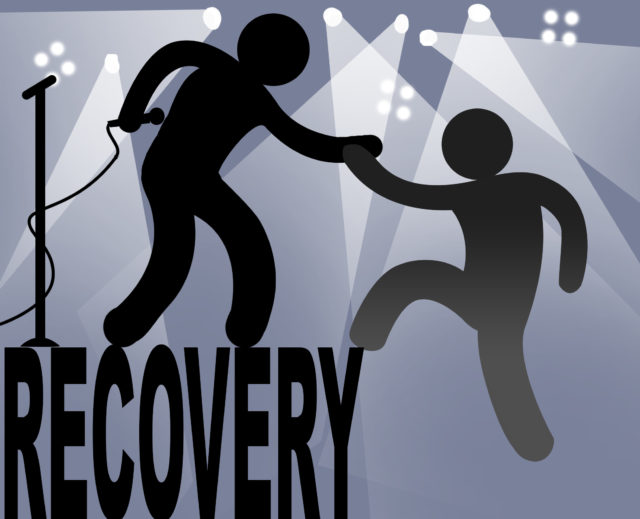There were 28.6 million people abusing illicit drugs, including prescription pills and marijuana, in the United States in 2016, according to the Substance Abuse and Mental Health Administration’s 2016 Survey on Drug Abuse and Health. This is nearly 8.8 percent of the U.S. population, a number that is staggering, yet sadly unsurprising. With such an out-of-control drug presence in the United States, cities have taken different approaches to addressing health and safety concerns regarding drug users.
Philadelphia was the most recent city to adopt a somewhat progressive technique of preventing drug overdoses by implementing safe drug injection sites. Many are up in arms about the implications of allowing addicts to have access to their illegal drug of choice without repercussions. However, the internationally recognized opioid epidemic that has plagued our country for years may be fought if the national and international community changes its mindset.
According to a Jan. 24 CNN article article, Philadelphia reported 907 drug overdoses in the city in 2016, and Pennsylvania was reported to be the state with the highest number of drug-related deaths in the country that year. In an attempt to be proactive, Philadelphia has decided to allow private organizations to set up monitored drug injection sites, which will observe and assist in the application of proper dosage and safe disposal of illegal drugs. These sites are being implemented after a delegation of city officials traveled to Seattle to observe the effects of supervised drug injection on the communities in that area. The results included research in the possible prevention of blood and fluid-transmitted diseases such as Hepatitis C and HIV/AIDS, according to a report presented by the delegation.
The goal of these sites is not just to observe and assist individuals looking for a high, however. The city of Philadelphia stressed that it is also a way to provide struggling addicts with the resources and tools to get help in overcoming their addiction. The sites will provide pamphlets and offer services where people who want to get help can be escorted to rehabilitation facilities by authorities. While the city of Philadelphia may be taking a step toward lowering the risks involved with drug abuse, and thereby lowering the use of illegal drugs, is it possible that safe injection sites could do more?
One area where there has been a massive shift in the mentality surrounding illegal drugs is in the music festival community. According to the Los Angeles Times, there have been 29 recorded drug-related deaths at California music festivals since 2006. What many music festivals have done in the past few years is coordinate with city governments to create organizations such as the Los Angeles County Music Festival Task Force, which monitors and provides services for festival-goers to protect those who choose to ingest or inject. One recommendation has been the creation of “amnesty boxes.” An amnesty box is a place where people who want to dispose of their drugs can do so without fear of repercussion, as users have been known to ingest all of their drugs at once in order to avoid being found with any on them, subsequently overdosing, according to a Vice article on drug use at festivals. Similarly, the amendment of Good Samaritan Laws in Washington to protect anyone seeking medical help due to a drug overdose or a bad batch may help with the prevention of death.
While all of these are beneficial steps, as are the safe injection sites in Philadelphia, it is not enough to simply prevent overdoses from happening — the use of illegal drugs must stop altogether. Changing the mentality around the conversation about illegal drugs is a good move, but there needs to be more movement.
Safe injection sites need to not just be regulated dispensaries but also should incorporate detoxing resources on site. Perhaps having therapists and doctors on-site to speak with users about getting help and assisting in a slower detox as opposed to cold-turkey — reducing the amount of drug injected or ingested until eventually reaching full detox — would help substantiate the validity of the sites. Also, Philadelphia is researching the possibility having temporary stay rooms for homeless or at-risk populations in the event they do choose to get help, much like a rehab facility but without the high costs.
Similarly, music festivals need to do more to encourage ditching drugs, as opposed to simply passing out flyers and providing resources to protect drug users in life-or-death situations.
Follow the lead of festivals such as Austin City Limits, which implemented a sober space area in Austin’s Zilker Park last year, allowing those trying to stay sober or avoiding temptation to have a quiet place to decompress when they felt urges. Have medical professionals on site to assist with any drug-related incidents that may occur and to sit down and talk about recovery with anyone who may want to get help.
This isn’t just a black and white situation — with drug addiction, it never is. So instead of treating it like something that is right or wrong, legal or illegal, we should treat the opioid epidemic as a problem with a long-term solution. One that many people are working to accomplish, but that cannot be addressed until everyone settles on the same page, and agree that sometimes progressive choices are the ones that will change the way we see the world.
Baylor students are just as much affected by this issue as people in Seattle, Los Angeles and Philadelphia, and Waco has a drug user population that needs assistance. The BARC and Mission Waco’s Renewal Recovery Program are both excellent examples of steps the Baylor and Waco communities are taking to assist in the transformation to a drug-free city. But Baylor students are still at risk for drug abuse at festivals, Waco residents still shoot up on the streets and until we address the opioid crisis is a major issue in our community, we cannot fix it.



